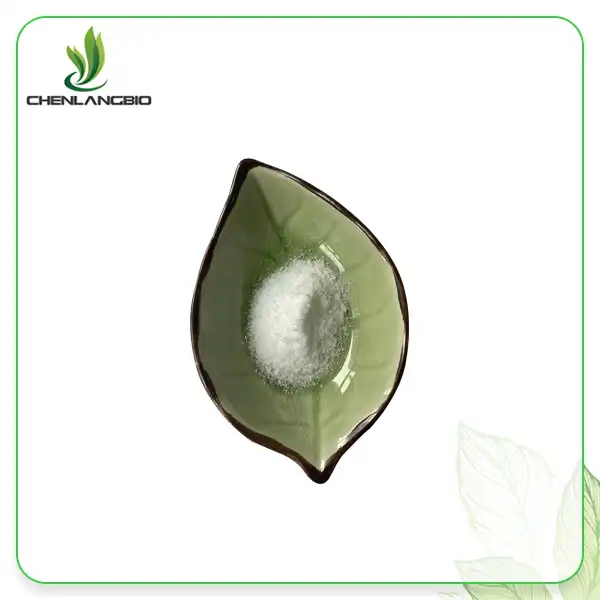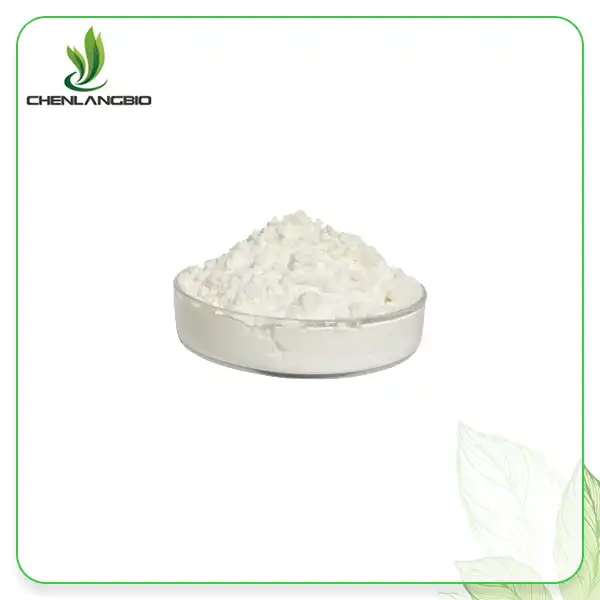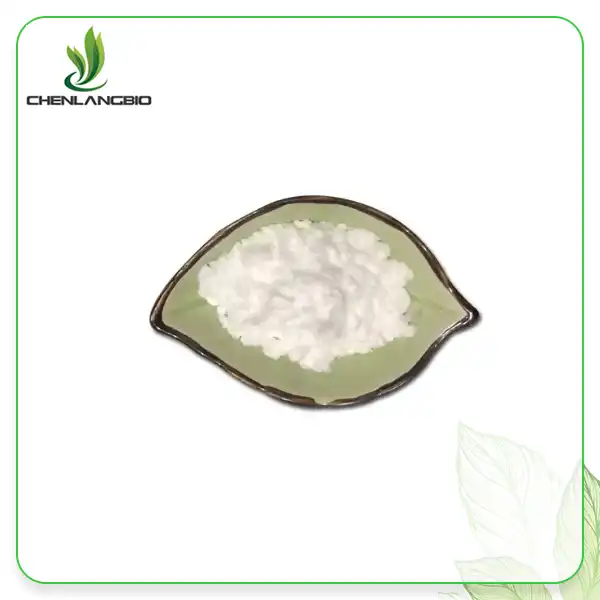Is Pyridoxal Phosphate the Same as Vitamin B6?
2025-11-24 12:54:24
Is pyridoxal phosphate the same as vitamin B6? Within the nutraceutical industry, subtle differences in ingredient chemistry often result in meaningful differences in how a nutrient behaves inside the human body. Vitamin B6 is one of the clearest examples of this principle. Many consumers—and even some early-stage formulators—tend to assume that all forms of vitamin B6 are interchangeable. They are not. Understanding the difference between pyridoxine, the inexpensive and widely used form found in most multivitamins, and pyridoxal-5-phosphate (P5P), the metabolically active coenzyme form, is essential for companies developing formulation-forward, clinically reliable products.
As brands continue gravitating toward functional ingredients with stronger evidence and more predictable biological performance, active vitamin forms such as P5P have become increasingly important. They appear across a wide range of formulas, including mood support, women’s health, cardiovascular blends, energy products, nootropic stacks, and functional beverages.
This article breaks down what differentiates pyridoxal phosphate from standard vitamin B6, why that difference matters, and how supplement developers can make more informed choices when selecting raw materials.

What Is Vitamin B6?
Vitamin B6 refers to a group of related compounds collectively known as vitamers. These include:
•Pyridoxine (PN)
•Pyridoxal (PL)
•Pyridoxamine (PM)
•Their phosphorylated forms, including pyridoxal-5-phosphate (P5P)
Among these, pyridoxine hydrochloride is the most common form in mass-market supplements. It is inexpensive, shelf-stable, and easy to formulate with—factors that made it a long-standing industry default.
However, pyridoxine itself is not the form used by human cells. Before it can participate in enzymatic reactions, the body must convert it into P5P. This distinction becomes important when evaluating efficacy, dose requirements, and product reliability.
What Is Pyridoxal Phosphate?
Pyridoxal-5-phosphate (P5P) is the biologically active coenzyme form of vitamin B6—the form required for more than 140 enzymatic reactions in the nervous, metabolic, cardiovascular, and endocrine systems.
Cells rely on P5P for:
•The synthesis of key neurotransmitters: serotonin, dopamine, norepinephrine, GABA
•Amino acid metabolism and nitrogen balance
•Glycogen breakdown and glucose utilization
•Hemoglobin development and red blood cell formation
•Homocysteine metabolism
•Hormone and steroid processing
•Methylation-related pathways
Because P5P is already in its active structure, it does not require conversion before entering these pathways. Tissues with high metabolic demand—especially the brain, liver, and muscles—can use it immediately.
Is Pyridoxal Phosphate the Same as Vitamin B6? The Short Answer: No
While P5P belongs to the vitamin B6 family, it is not identical to standard vitamin B6 (pyridoxine). The difference is functional:
Pyridoxine → a precursor that must be activated
P5P → the active coenzyme that carries out physiological work
This difference influences:
•Absorption efficiency
•Neurological and metabolic impact
•Dose consistency
•Formulation outcomes
•Consumer response variability
For some individuals, pyridoxine converts efficiently. But many people—due to genetics, lifestyle, or health conditions—convert it poorly, making the choice of B6 form significant in real-world applications.
How Pyridoxine (B6) Converts to P5P – And Why It Matters
Standard B6 requires a multi-step conversion sequence involving phosphorylation and oxidation processes, with the PNPO enzyme playing a central role. Several factors can interfere with this pathway:
•Genetic variations in the PNPO gene
•Liver stress or reduced hepatic capacity
•Chronic inflammation
•Nutrient deficiencies (especially magnesium)
•Chronic alcohol intake
•Certain prescription drugs
When the conversion pathway slows, pyridoxine may accumulate while P5P remains insufficient, resulting in a functional deficiency even with adequate intake. Because P5P bypasses these metabolic chokepoints, it delivers more stable biological activity—one reason many practitioners and premium supplement brands prefer using it.
P5P vs Vitamin B6: Bioavailability and Physiological Differences
1. Bioavailability
Pyridoxine: Dependent on liver activation; varies widely among individuals
P5P: Immediately usable; consistent across populations
2. Neurological Function
P5P directly participates in neurotransmitter synthesis. Pyridoxine must first convert, and in many individuals, the conversion is only partial.
3. Hormonal and Women’s Health
P5P supports estrogen clearance and progesterone pathways more reliably than pyridoxine. This makes it a preferred option in PMS and hormone-balance formulas.
4. Energy and Metabolism
By activating glycogen phosphorylase, P5P supports efficient glucose release from glycogen stores—important for athletes and individuals with fluctuating energy demands.
5. Safety Profile
High-dose pyridoxine has been associated with sensory neuropathy in certain cases.
P5P reaches functional efficacy at lower doses, reducing exposure and improving tolerability.
What Is Pyridoxal Phosphate Used For?
1. Mood & Stress Support
P5P underpins serotonin, dopamine, and GABA production—central pathways for emotional balance and stress response.
2. Women’s Health & PMS
It supports estrogen metabolism, progesterone synthesis, and neurotransmitter activity, making it valuable in PMS and monthly comfort blends.
3. Homocysteine & Cardiovascular Support
By enabling the transsulfuration pathway, P5P helps maintain healthy homocysteine levels, especially when paired with methylated folate and B12.
4. Energy & Athletic Performance
Its involvement in glucose mobilization and amino acid metabolism makes P5P a strong fit for endurance, recovery, and metabolic formulas.
5. Sleep Support
Through its influence on serotonin and melatonin pathways, P5P contributes to healthy sleep patterns and circadian rhythm stability.
Recommended Dosage: P5P vs Vitamin B6
|
Use Case |
P5P Dosage |
Notes |
|
General wellness |
10–20 mg/day |
Daily foundational support |
|
Mood, stress, sleep |
20–40 mg/day |
Works well with magnesium, theanine |
|
PMS / Women’s health |
25–50 mg/day |
Supports hormonal pathways |
|
Homocysteine / Heart health |
30–50 mg/day |
Often paired with B12 + methylfolate |
|
Athletes / High-demand |
40–75 mg/day |
For metabolic stress and performance |
|
Functional beverages |
5–15 mg/serving |
RTD-grade P5P recommended |
Which One Should Supplement Brands Choose?(Formulation Insights)
Pyridoxine is typically chosen when:
•Cost control is the highest priority
•The product is a basic B-complex
•No high-level clinical expectations are required
P5P is preferred when:
•The formula targets mood, women’s health, stress, energy, or cardiovascular support
•The product is positioned as premium or clinical-grade
•The brand seeks consistent consumer results
•The formula is designed for RTDs, gummies, stick packs, or advanced delivery systems
•The target audience includes individuals with metabolic variability
Across the industry, demand continues to shift toward bioactive, clinically meaningful ingredient forms—and P5P aligns with that movement.
Why Choose CHEN LANG BIO TECH as Your P5P Supplier
For brands formulating with active vitamin B6, choosing a reliable supplier directly influences product quality and consistency.
CHEN LANG BIO TECH offers:
♦High-purity P5P monohydrate 99%+
♦Factory-direct manufacturing and stable pricing
♦ISO, Halal, Kosher, and GMP documentation
♦Batch consistency verified through HPLC testing
♦Fast, global delivery with secure export packaging
♦Flexible MOQs supporting both new and established brands
♦Technical support for capsules, tablets, gummies, RTDs, and specialty formats
Our P5P is used worldwide in formulations for mood support, PMS relief, cardiovascular wellness, energy products, nootropics, and functional beverages.
FAQ about Pyridoxal Phosphate
1,What’s your P5P powder purity?
XI AN CHEN LANG BIO TECH supply high puirty 99% powder with HPLC as the analytical method.
2,How is your P5P monohydrate typically tested?
The industry standard includes:
♦HPLC for assay
♦Heavy metals (Pb, As, Cd, Hg)
♦Microbiology (TPC, yeast/mold, pathogens)
♦Loss on drying
♦Residual solvents
♦Identity confirmation
We supply provide complete COA + third-party testing upon request.
3.Is P5P monohydrate stable in beverages, gummies, and powders?
Yes. P5P monohydrate offers:
•Better handling stability
•Good flowability for blending
•Lower hygroscopicity compared with the anhydrous form
•Solid performance in RTDs, stick packs, gummies, and tablets
For functional beverages, XI AN CHEN LANG BIO TECH supply beverage-grade P5P to ensure optimal solubility.
4.What is the typical MOQ for bulk P5P powder?
CHEN LANG BIO TECH supports flexible MOQ, ideal for startups and product testing. Common our MOQ is 1 kg!5 kg for lab-scale or new-brand sampling.
5.How should P5P monohydrate be stored?
It should keep in a cool, dry environment and away from direct light and heat, if properly stored, P5P typically has a 24–36 month shelf life.
6.How fast can you send to global buyers?
We always ship the goods within 1–3 business days dispatch if the material is in stock.
Conclusion: The Clear Difference Between P5P and Vitamin B6
Pyridoxal phosphate is not the same as vitamin B6—it is the form that actually carries out the nutrient’s essential roles in human metabolism. For supplement brands focused on efficacy, consumer satisfaction, and formulation reliability, P5P offers clear advantages over pyridoxine. Its superior bioavailability, lower effective dose range, and broader clinical relevance make it one of the most important active vitamins for next-generation products.
If your next formulation demands a high-performance, science-backed form of vitamin B6, P5P monohydrate is the ingredient of choice.
📩 To request COA, samples, or a quotation, contact CHEN LANG BIO TECH Email:admin@chenlangbio.com today and discover why global nutraceutical brands source their P5P from us.
Send Inquiry
Related Industry Knowledge
- What Buyers Should Know About the Molecular Weight of Pyridoxal 5 Phosphate Monohydrate?
- How to Choose High-Quality Palmitoylethanolamide Powder for Your Brand?
- What are the Main Benefits of Ascorbyl Tetraisopalmitate?
- How Does Serrapeptase Powder Enhance Protein Hydrolysis Efficiency?
- What Concentration of Kojic Acid Dipalmitate is Most Effective?
- How Does PQQ Work in the Body?
- Bulk Dimethylmethoxy Chromanol: Uses and Benefits
- Is 4-Butylresorcinol Better Than Hydroquinone
- What's Unique Functions of Haematococcus Powder in Skin Care
- Is Glutathione GSH Powder Good for Skin Whitening









